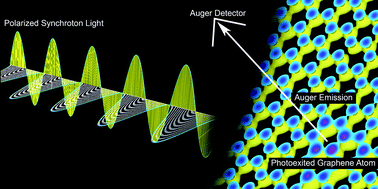On chemical bonding and electronic structure of graphene–metal contacts†
Abstract
The nature of chemical bonding at

- This article is part of the themed collection: Physical Chemistry
* Corresponding authors
a
Department of Chemistry, University at Buffalo, The State University of New York, Buffalo, New York 14260–3000, USA
E-mail:
sb244@buffalo.edu
b Material Measurement Laboratory, National Institute of Standards and Technology, Gaithersburg, Maryland 20899, USA
c Front-End Process Division, SEMATECH, 2706 Montopolis Drive, Austin, Texas 78741, USA
d Molecular Foundry, Lawrence Berkeley National Laboratory, Berkeley, California, 94720 USA
The nature of chemical bonding at

 Please wait while we load your content...
Something went wrong. Try again?
Please wait while we load your content...
Something went wrong. Try again?
B. J. Schultz, C. Jaye, P. S. Lysaght, D. A. Fischer, D. Prendergast and S. Banerjee, Chem. Sci., 2013, 4, 494 DOI: 10.1039/C2SC21018E
To request permission to reproduce material from this article, please go to the Copyright Clearance Center request page.
If you are an author contributing to an RSC publication, you do not need to request permission provided correct acknowledgement is given.
If you are the author of this article, you do not need to request permission to reproduce figures and diagrams provided correct acknowledgement is given. If you want to reproduce the whole article in a third-party publication (excluding your thesis/dissertation for which permission is not required) please go to the Copyright Clearance Center request page.
Read more about how to correctly acknowledge RSC content.
 Fetching data from CrossRef.
Fetching data from CrossRef.
This may take some time to load.
Loading related content
